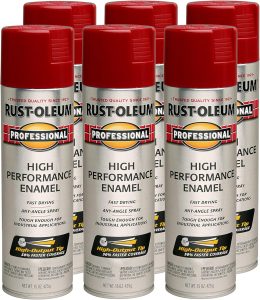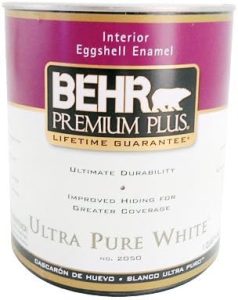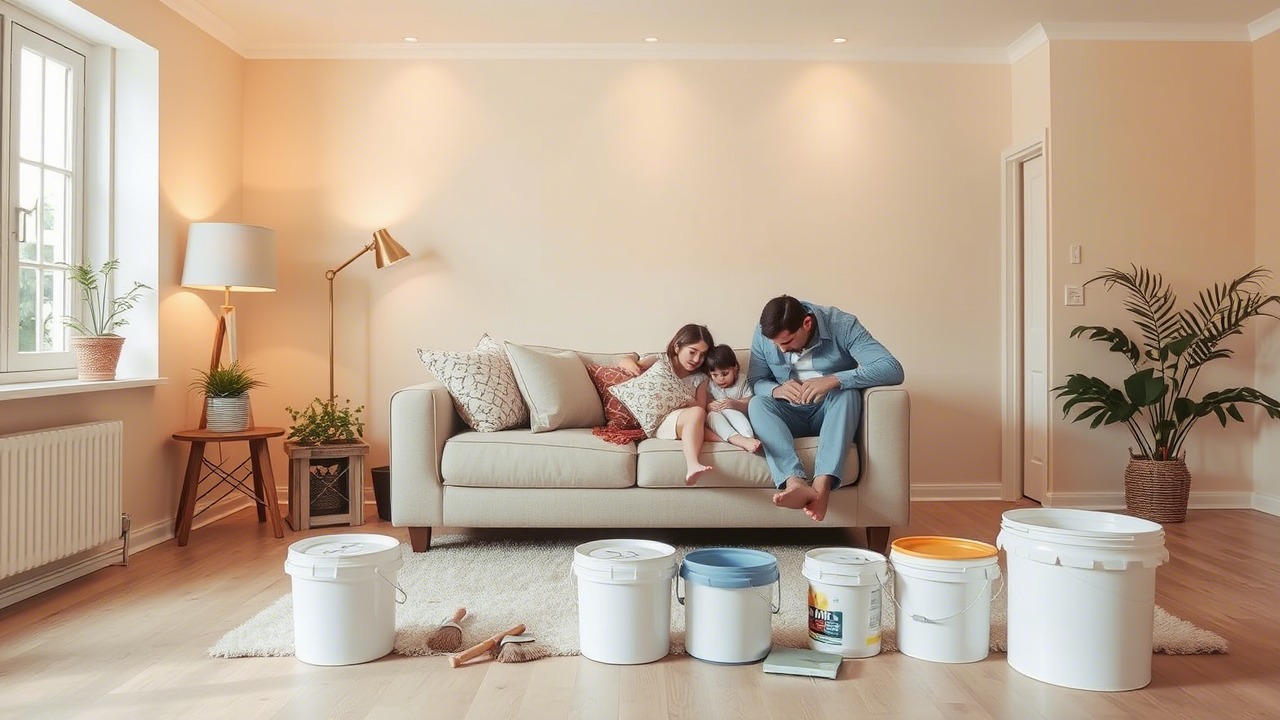Playgrounds are an essential part of childhood development. They provide children with opportunities for physical exercise, social interaction, and imaginative play. As a result, playground equipment must be sturdy, safe, and visually appealing to foster a positive play experience. One of the best ways to ensure playground equipment remains in top condition while enhancing its overall appearance is by choosing the best paint.
We’ll discuss why choosing the right paint for playground equipment is crucial, the factors to consider when selecting paint, and some of the best paints available in the market. Additionally, we’ll provide answers to frequently asked questions to help you make an informed decision when it comes to painting or repainting your playground equipment.
Why Is Paint Important for Playground Equipment?
Playground equipment is continuously exposed to the elements, including intense sunlight, moisture, and varying temperatures. Over time, these elements can cause the equipment to deteriorate. Applying the right paint to the equipment offers several benefits, ensuring its long-term durability and safety.
Here are some key reasons why paint is vital for playground equipment:
1. Protection from the Elements
Playground equipment is typically made from metals, wood, or plastics, all of which can degrade under harsh weather conditions. Metal, for example, is prone to rusting when exposed to moisture, while wood can rot or warp. A high-quality paint acts as a protective layer that shields the equipment from rain, UV rays, snow, and temperature fluctuations.
2. Preventing Corrosion and Rust
Metal playground equipment, such as swings, slides, and climbing structures, are vulnerable to corrosion and rust, particularly when exposed to moisture and humidity. Corrosion not only weakens the structure of the equipment but can also create sharp edges or holes that pose safety risks to children. Protective paint prevents rust from forming and helps maintain the structural integrity of the equipment.
3. Increasing Durability and Longevity
High-quality paints can significantly extend the life of playground equipment. Paints designed for outdoor use are formulated to withstand the wear and tear caused by children playing and the environmental factors they encounter. The right paint ensures that the equipment will remain durable and safe for use for many years, saving you money on costly repairs or replacements.
4. Enhancing Aesthetic Appeal
Playgrounds are designed to be fun, inviting, and visually stimulating for children. The colors and appearance of playground equipment play a vital role in creating an engaging environment. Bright, vibrant colors can attract children and encourage active participation in outdoor play. Choosing the right paint allows you to freshen up old equipment and provide an aesthetically pleasing play area.
5. Safety Considerations
Playground paint should not only be durable but also safe for children. Some paints contain harmful chemicals that can be toxic if ingested or if they come into prolonged contact with the skin. Choosing the best paint for playground equipment involves selecting non-toxic, child-safe options that ensure the safety of the children using the equipment.
Factors to Consider When Choosing the Best Paint for Playground Equipment
When selecting paint for playground equipment, there are several factors to keep in mind to ensure that the paint will provide long-lasting protection and maintain the equipment’s safety and appearance.
1. Durability and Weather Resistance
The paint must be durable enough to withstand extreme weather conditions. It should resist fading from UV exposure, and it must be able to endure the impact of rain, snow, and humidity. This is especially important for playground equipment located in outdoor spaces.
2. Safety and Non-Toxicity
Children frequently come into contact with playground equipment, so it is essential to use paints that are free of harmful chemicals. Make sure the paint is labeled as non-toxic, lead-free, and safe for children. Look for paints that are certified with child safety standards to avoid the risk of exposure to hazardous substances.
3. Type of Material
Different types of playground equipment are made from different materials, including metal, wood, and plastic. The type of material will influence the type of paint you should use. For example, metal surfaces may require rust-resistant paint, while wood may need a more weather-resistant coating to prevent rot.
4. Ease of Application
The ease of application is another essential factor to consider. Some paints are easier to apply than others, and some may require a primer. Choose a paint that suits your skill level and provides the best coverage for the equipment.
5. Color Options
Playground equipment is often a central feature in children’s play areas, and vibrant colors are essential in making the space visually appealing. Choose paints that offer a wide range of colors to brighten up the playground and encourage creative play.
6. Eco-Friendliness
For environmentally conscious choices, look for eco-friendly paints that are low in volatile organic compounds (VOCs). These paints have fewer chemicals and are better for the environment and the health of children who use the playground.
Types of Paints for Playground Equipment
Now that we’ve discussed the factors to consider, let’s explore some of the best types of paints for playground equipment. Each type of paint has unique properties, and the best choice depends on the type of equipment and the specific needs of the playground.
1. Acrylic Paint
Acrylic paint is a popular option for playground equipment due to its flexibility and excellent resistance to UV rays. Acrylic paint forms a durable finish that can withstand outdoor conditions while maintaining its color over time. It is also available in various finishes, including matte, satin, and gloss, allowing you to customize the look of the playground equipment.
Benefits:
- Dries quickly
- UV resistant
- Water-based and non-toxic
- Easy to clean
Best For: Wood and metal playground equipment.
2. Enamel Paint
Enamel paint is highly durable and resistant to wear and tear, making it ideal for playgrounds with high traffic. It forms a hard, glossy finish that resists fading, chipping, and weathering. Enamel paint can withstand various environmental conditions, including rain and humidity, and is available in a wide range of colors.
Benefits:
- Long-lasting and durable
- Glossy finish
- Resistant to fading and chipping
Best For: Metal playground equipment.
3. Epoxy Paint
Epoxy paint is a robust, heavy-duty option that is perfect for protecting playground equipment made of metal. This two-part paint forms a hard, chemically resistant finish that can stand up to the harshest outdoor conditions. Epoxy paint is also resistant to abrasion and impact, making it ideal for playgrounds where equipment is subjected to high traffic.
Benefits:
- Excellent corrosion and rust resistance
- Long-lasting and durable
- Resistant to chemicals and moisture
Best For: Metal structures exposed to harsh conditions.
4. Polyurethane Paint
Polyurethane paint is known for its high-gloss finish and resistance to UV rays, making it an excellent choice for outdoor playground equipment. Polyurethane paints are tough, long-lasting, and provide a smooth, durable surface that resists weathering and fading over time.
Benefits:
- UV resistant
- Durable finish
- Resists abrasion and chemicals
Best For: Playground equipment exposed to constant sunlight.
5. Chalkboard Paint
For an added educational element, chalkboard paint can be used on certain sections of the playground. This type of paint creates a surface where children can write and draw with chalk. It encourages creativity and can be applied to wooden fences, playhouses, and other surfaces.
Benefits:
- Interactive and fun for children
- Encourages creativity and learning
- Easy to apply
Best For: Playhouses, fences, and walls that children can interact with.
Top Recommendations for the Best Paint for Playground Equipment
Here are some of the best playground paints available on the market:
1. Rust-Oleum 7565838 Industrial Enamel Paint

This enamel paint is an excellent option for playground equipment due to its durability and resistance to wear and tear. It provides a glossy finish that is easy to clean and maintains its color over time.
Key Features:
- Glossy, long-lasting finish
- Ideal for outdoor equipment
- Available in various colors
Best For: Metal playground equipment.
2. Behr Premium Plus Ultra Exterior Paint

Behr is known for offering high-quality exterior paints, and their Premium Plus Ultra Exterior Paint is no exception. It’s perfect for wood and metal surfaces and provides excellent protection against the elements, including UV rays, moisture, and mildew.
Key Features:
- Excellent coverage
- UV and mildew resistant
- Available in a variety of colors
Best For: Wood and metal surfaces.
3. Sherwin-Williams SuperPaint Exterior Acrylic Latex

Sherwin-Williams’ SuperPaint is a premium acrylic latex paint that’s designed for durability and performance. It provides exceptional protection against fading, chipping, and peeling, making it an excellent choice for playground equipment.
Key Features:
- UV resistant
- Resistant to chipping and peeling
- Long-lasting protection
Best For: Playgrounds exposed to intense sunlight and weather conditions.
How to Apply Paint to Playground Equipment: A Step-by-Step Guide
To ensure the paint lasts and provides the necessary protection, it’s essential to apply it correctly. Here’s a step-by-step guide on how to apply paint to playground equipment:
Step 1: Clean the Surface
Before applying any paint, thoroughly clean the equipment to remove dirt, debris, and any old peeling paint. Use a power washer or scrub the surface with soap and water, depending on the equipment’s material.
Step 2: Repair Any Damage
Inspect the equipment for any damage or rust spots. Sand down rough areas and apply a rust inhibitor to metal surfaces if necessary. Fill any cracks or holes in the wood with wood filler and sand it smooth.
Step 3: Prime the Surface (if needed)
If the playground equipment has bare metal or wood, it’s recommended to apply a primer before painting. Priming helps the paint adhere better to the surface and provides additional protection against rust and moisture.
Step 4: Apply the Paint
Once the primer has dried, apply the paint in thin, even layers. Use a brush or roller for smaller areas and a sprayer for larger surfaces. Allow the first coat to dry before applying a second coat.
Step 5: Let the Paint Dry Completely
After the final coat, allow the paint to dry completely before allowing children to use the equipment. Drying times will vary depending on the type of paint used, so be sure to follow the manufacturer’s instructions.
Frequently Asked Questions (FAQs)
- What type of paint should I use for playground equipment?
Acrylic or enamel paints are great choices for playground equipment. These paints are durable, weather-resistant, and provide vibrant colors that enhance the playground’s appearance. - Is it safe to use regular household paint on playground equipment?
No, regular household paint may contain harmful chemicals or not be designed for outdoor use. It’s best to choose paint specifically formulated for playgrounds, which is non-toxic and designed for weather exposure. - How often should I repaint playground equipment?
Playground equipment should be repainted every few years, depending on its exposure to the elements. If you notice chipping, fading, or signs of corrosion, it’s time to touch up the paint. - Can I paint over rust on metal playground equipment?
Yes, you can paint over rust, but it’s important to remove any loose rust first by sanding or using a wire brush. Consider applying a rust-inhibiting primer before painting to prevent further corrosion. - How can I ensure the paint is safe for children?
Always choose non-toxic, lead-free, and child-safe paints. Look for paints labeled with child safety certifications, such as low VOC (volatile organic compounds) and non-toxic formulations. - Can I apply chalkboard paint to playground equipment?
Yes, chalkboard paint can be applied to wooden fences, walls, or playhouses on playgrounds. It creates an interactive space for children to draw and write with chalk. - How long does it take for playground paint to dry?
Drying times depend on the type of paint used and environmental conditions. On average, most paints require 4-6 hours to dry to the touch, but they may need 24-48 hours to fully cure.
Conclusion
Choosing the best paint for playground equipment is crucial to ensure its durability, safety, and overall appearance. Whether you’re repainting old equipment or adding a fresh coat of paint to newly installed structures, selecting high-quality, non-toxic, and weather-resistant paint is essential. By following the guidelines and using the recommended types of paint, you can create a safe, attractive, and long-lasting playground that children can enjoy for years to come.


Leave a Reply